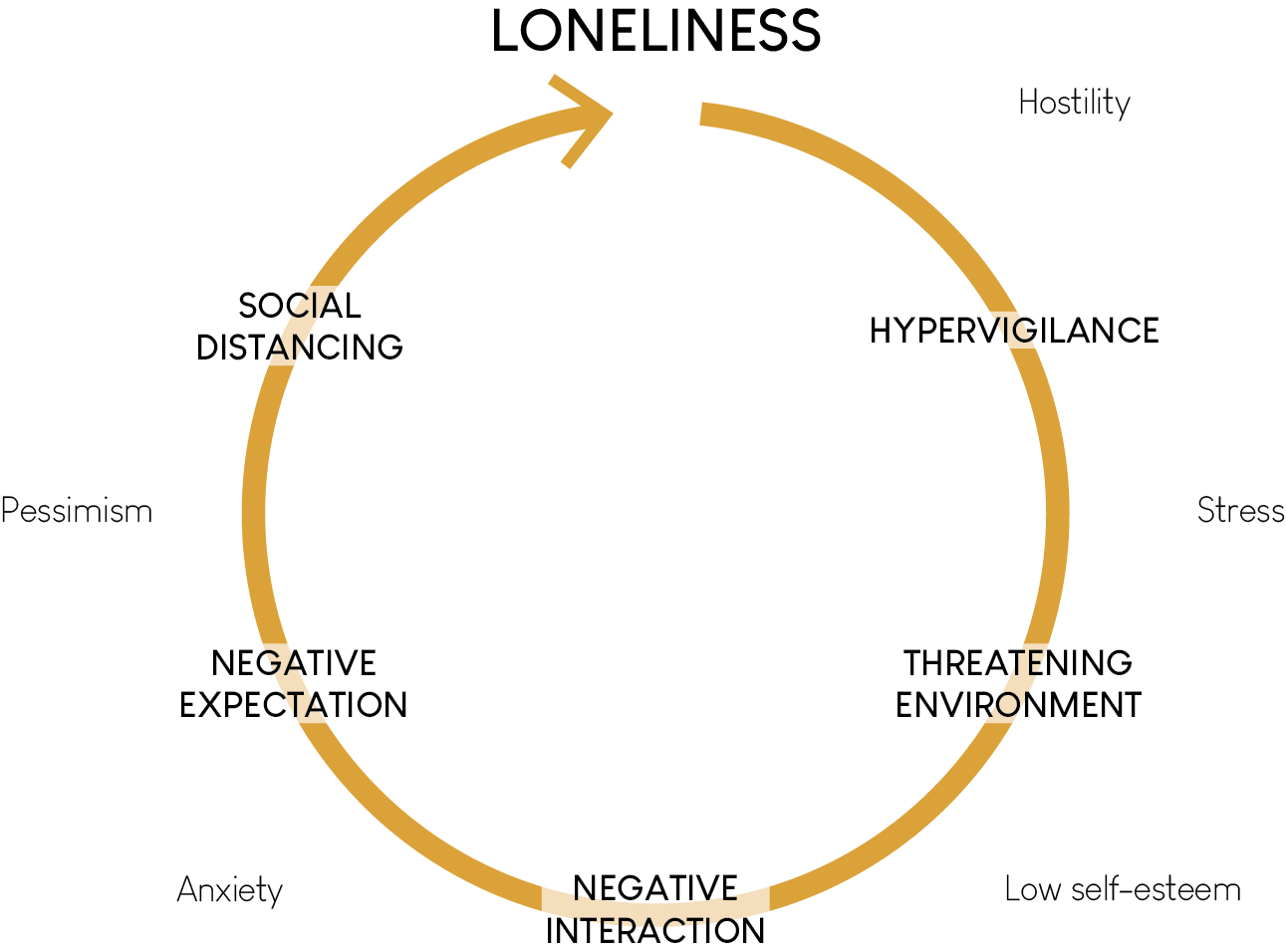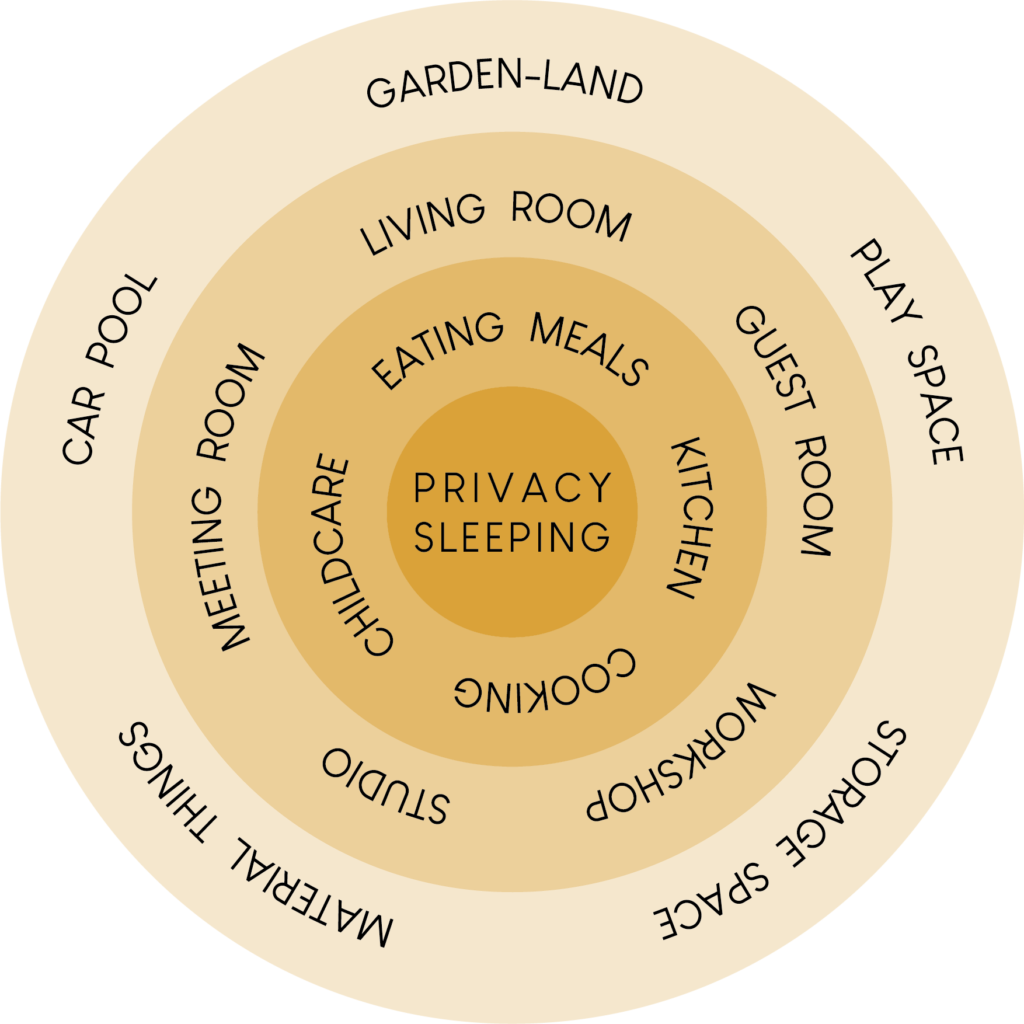Home – Introduction – Research – Cases – Guidebook – Proposal – Reflections
“Loneliness is the feeling of disconnectedness to the surroundings”

There are different ways to tackle loneliness, the interventions to reduce the phenomenon need to deal with its whole complexity. According to the reviews of different experiences of interventions to reduce loneliness made by Hawkley and Cacioppo (2010, p8), “it exists globally four types of interventions to strive against loneliness: enhancing social skills, providing social support, increasing opportunities for social interaction, and addressing maladaptive social cognition”. Even if much of the research concluded that the most successful one was “increasing opportunities for social interaction” (Hawkley, Cacioppo, 2010, p8), the four types need to be addressed in every probable solution for loneliness. A secure environment where individuals can interact freely is also primordial to prevent loneliness as altruism increases with the feeling of safety (Ahn, et al., 2018, p10). Weak social ties are diversifying one’s social network. Diversity is an essential factor as it makes people less vulnerable to variation in their network (Berkman, 1995; Cohen & Janicki-Deverts, 2009, in Sandstrom & Dunn, 2014, p920)
“In a community, sharing has two angles, the sharing of resources and the sharing of values”

The general idea of community living being the reduction of private areas in the profit of the community is contradictory to the conception of living being the highest form of privacy (Schmid, 2019, p5). Therefore, a lot of attention needs to be put on how and where to draw the line between private and common. As Schmid said, “a system of shared spaces with different functions, varied infrastructure, and a diverse user group ensures a balance between appropriation and utilization” (2019, p115). To establish a transition from common to private with diversity, there is the concept of sharing spheres that is interesting to follow (see picture). There are 4 spheres and each with a different level of privacy. (Ahn, et al., 2018, p33). The bedroom is the most intimate and the outdoor spaces are the most open. The “living unit” in this kind of housing is important as it is the only getaway from the community for the residents. The sociologists Hartmut Häussermann and Walter Siebel (1996, p15) researched the characteristics a living space should have, they established four characteristics: the functional home, the social home, the socio-psychological home and the legal and economic home.